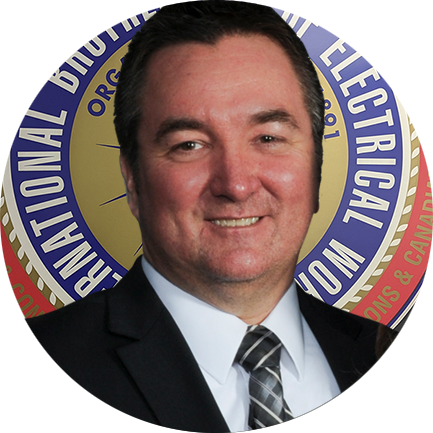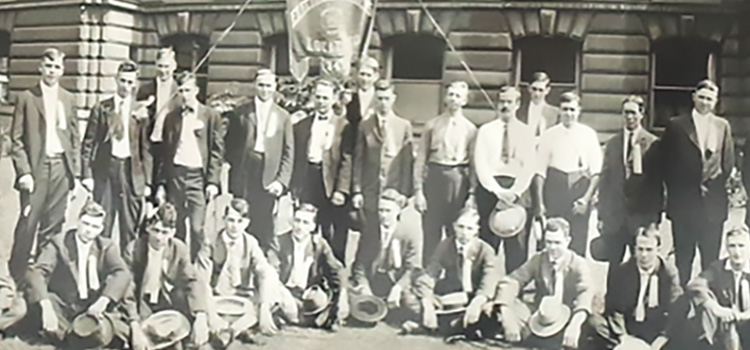Over a Century of Service to Central Iowa
When officials of the International Brotherhood of Electrical Workers met with leaders of the union’s great “secession movement” in Des Moines on June 7, 1914, to work out final details of the end of hostilities, they could not have selected a more symbolically appropriate location than the capital of Iowa. As The Iowa Unionist newspaper noted when it announced in its October 8, 1914, issue that “the ‘war’ was over,” the state’s contingent of locals had been affiliated with the break-away “Reid-Murphy” faction.
What’s more, by then the rebelling locals were headed by Des Moines resident James “Jim” Fitzgerald, who was president of the city’s mixed-classification Local 55 and had replaced the secessionists’ inaugural president, J.J. Reid. (Fitzgerald had written in the June 1908 Electrical Worker, the official journal of the I.B.E.W., “I am convinced beyond a reasonable doubt that a mere special Executive Board meeting will not bring about that unity of action which is so necessary at this time for the future growth and prosperity of our I.B.E.W.”)
Establishing a Permanent Local
Apparently eager to reinstate a faithful local in Des Moines, the I.B.E.W. established Local 347 in the city well before the local was officially chartered on December 26, 1914. In fact, the local was already participating with the Des Moines Trades and Labor Assembly by November 1914, seating delegates Harvey Penny, C.R. Moore and N.W. Moon at the Assembly’s November 24 meeting, according to a report in the November 26 Iowa Unionist.
Leadership Through the Years

Honoring Patrick Wells - A Remarkable Journey of Dedication and Service
Patrick Wells' journey with IBEW 347 started decades ago when he joined as a young apprentice, eager to make a difference in the lives of fellow workers. With determination and hard work, Patrick swiftly climbed the ranks within IBEW 347. His commitment to the principles of solidarity, fairness, and respect earned him the respect of his peers and leadership roles within the union, including that of Business Manager in 2013. He soon became a vocal advocate for workers' rights and safety in the workplace. As Patrick took on leadership responsibilities, he focused on empowering the workforce through education and skill development. Throughout his tenure, Patrick played a pivotal role in advocating for stronger labor laws and protections for workers. His tireless efforts led to positive changes in the industry, benefitting workers and their families across the state. In 2023, Patrick was given the opportunity to create a roll, new to the IBEW. He became the 11th District Renewable Energy & Government Affairs Coordinator.








